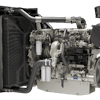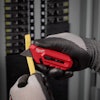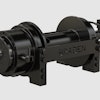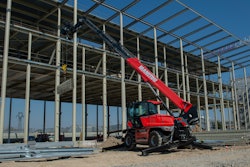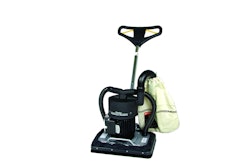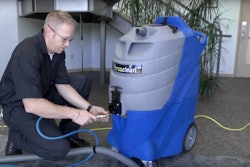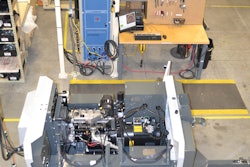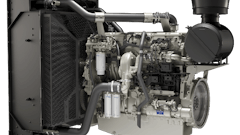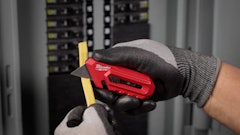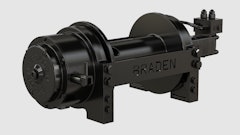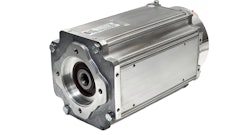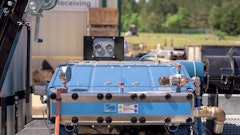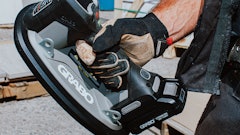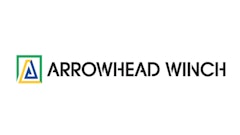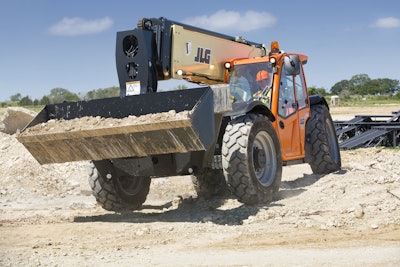
Visit any construction site and chances are at least one telehandler will be hard at work. The versatility of these machines makes them a popular choice for unloading, transporting and placing materials at height on a jobsite. New technologies and operator attention to operating and maintenance procedures can make them a safe choice as well.
A variety of features help operators navigate terrain more confidently and safely, including new cab designs that provide a better field of vision and options such as reversing cameras and reverse sensing systems that alert operators to objects behind them. In addition, rear axle stabilization systems available on some telehandlers automatically switch the machines from a three-point to four-point stance to increase operator confidence and performance.
But features like these are no substitute for general safety practices that begin with operator training. Before driving any piece of equipment, operators should read the machine’s Operation and Safety Manual. The operator must then complete training and demonstrate proficient operation of the equipment under the supervision of an experienced and qualified person. Operators should also wear the appropriate personal protective equipment as required, which may include boots, hard hats, safety glasses, and gloves, and personal fall protection.
Safety guidelines also call for jobsite inspections. Operators must be sure the machine is positioned on a firm surface and check the allowable capacity of floors, bridges, tracks and surfaces. They should also look for holes, bumps, drop-offs, obstructions, debris, concealed holes, and other potential surface hazards. Wind conditions should be considered and the area checked for clearances overhead and on the sides and bottom of the telehandler.
Just as important to jobsite safety is a consistent maintenance routine to help ensure proper and safe machine use. Although the equipment owner is required to conduct inspections and routine maintenance, the operator plays a critical role in machine maintenance by conducting a pre-operation and walk-around inspection, warm-up, and pre-operational checks. A typical walk-around inspection of a telehandler includes approximately 20 check points, among them:
- Standing at the boom sections and cylinders, checking the front, top, side, and rear wear pads for grease and making sure pivot pins are secure and hydraulic hoses are not leaking.
- Looking inside the battery compartment for tight cables with no visible damage or corrosion.
- Checking the engine compartment to be sure drive belts are in good condition and engine mounts are secure.
- Making sure gauges, switches, joystick, foot controls, horn and seatbelt are operational.
- Ensuring tires are properly inflated, secured with no loose or missing lug nuts, and free of worn tread, cuts or tears.
- Checking that mirrors are clean and undamaged, front and rear axles display undamaged steer cylinders, pivot pins are secure, and hydraulic hoses intact.
- Ensuring safety decals are legible and in place, and applicable manuals, including the Operation and Safety Manual, are located in the manual holder.
- Wiping dirt and grease away from all fluid filler caps or fill plugs, and confirming that attachments and accessories are installed according to the telehandler’s capacity chart.
Once the walk-around inspection is complete, begin the warm-up and operational check. During the warm-up period, test the heater, defroster, and windshield wiper for proper function. All lighting systems should be operational and mirrors adjusted for maximum visibility.
When the engine warms up, test each of the following: service brake and parking brake operation, forward and reverse travel, steering in both directions with the engine at low idle, horn and backup alarm, and all joystick functions. Finally, ensure that all boom and attachment functions operate smoothly and correctly, and perform any additional checks per the manufacturer’s instructions.
Jobsite safety is always a priority. New technologies, operator training and attention to maintenance can go a long way toward creating an environment that allows telehandlers to operate safely and efficiently.
